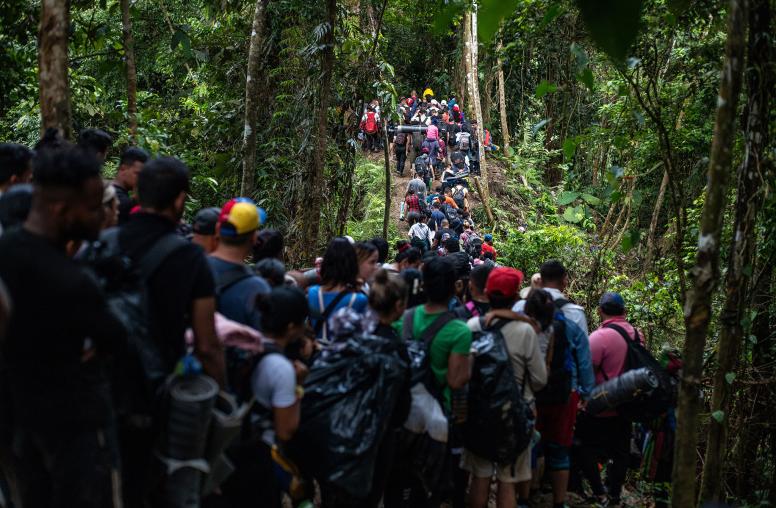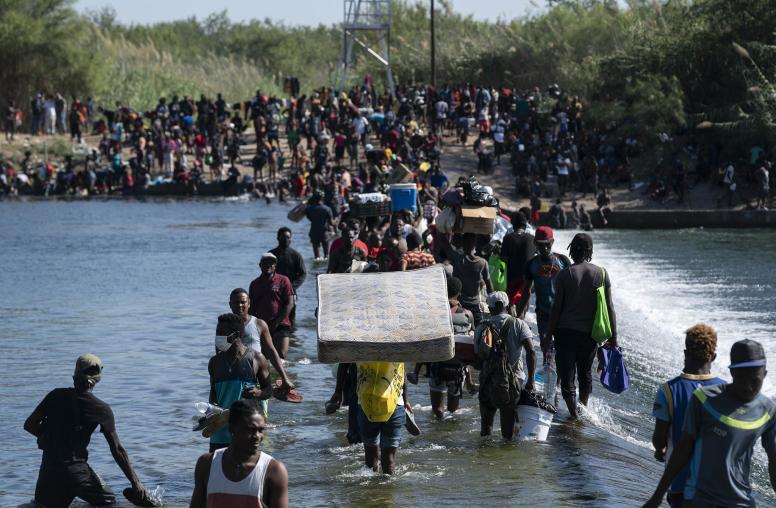Preventing Extremism in Fragile States: A New Approach
Final Report of the Task Force on Extremism in Fragile States
Despite our success protecting America’s homeland, extremism is spreading. Since 9/11, the number of terrorist attacks worldwide per year has increased fivefold. As long as this continues, the United States will remain vulnerable to terrorism while extremism contributes to chaos, conflict, and coercion that drains U.S. resources, weakens our allies, and provides openings for our competitors.
We need a new strategy to prevent extremism in fragile states. If we can mitigate the underlying conditions that allow extremism to emerge and spread in these states, the United States will be closer to breaking out of the costly cycle of perpetual crisis response, pushing back against the growing threat of extremism, and positioning itself effectively for strategic engagement with its competitors. Recent successes in the fight against the Islamic State makes this a unique opportunity to focus on prevention. We must move from defeating terrorists, to preventing extremism.
Established in response to a request from the U.S. Congress in 2017, the Task Force on Extremism in Fragile States has developed a new strategy that represents the insightful and bipartisan foreign policy thinking of fifteen leading former policymakers, legislators, and other experts on how to empower fragile states to resist extremism on their own.
Executive Summary
We need a new strategy to prevent the spread of extremism, which threatens our homeland, our strategic interests, and our values. Our current focus on counterterrorism is necessary, but neither sufficient nor cost-effective. Congress has charged this Task Force with developing a new approach, one that will get ahead of the problem.
We need a new strategy because, despite our success protecting the homeland, terrorism is spreading. Worldwide, annual terrorist attacks have increased fivefold since 2001. The number of self-professed Salafi-jihadist fighters has more than tripled and they are now present in nineteen countries in the Sahel, the Horn of Africa, and the Near East.
We need a new strategy because the costs of our current approach are unsustainable. Over the last eighteen years, ten thousand Americans have lost their lives and fifty thousand have been wounded fighting this threat, at an estimated cost of $5.9 trillion to U.S. taxpayers.1
We need a new strategy because terrorism is not the only threat we face. Terrorism is a symptom, but extremism—an ideology calling for the imposition of a totalitarian order intent on destroying free societies like ours—is the disease. Extremism both preys on fragile states and contributes to chaos, conflict, and coercion that kills innocents, drains U.S. resources, forecloses future market opportunities, weakens our allies, and provides openings for our competitors.
To reduce our expenditure of blood and treasure, protect against future threats, and preserve American leadership and values in contested parts of the world, we must not only respond to terrorism but also strive to prevent extremism from taking root in the first place. This does not mean seeking to stop all violence or to rebuild nations in vulnerable regions of the world. Instead, it means recognizing that even modest preventive investments—if they are strategic, coordinated, and well-timed—can reduce the risk that extremists will exploit fragile states. The objective of a preventive approach should be to strengthen societies that are vulnerable to extremism so they can become self-reliant, better able to resist this scourge, and protect their hard-earned economic and security gains.
This imperative for prevention is not new. Back in 2004, the 9/11 Commission argued that counterterrorism and homeland security must be coupled with “a preventive strategy that is as much, or more, political as it is military.”2 That call has not been answered. And so the threat continues to rise, the costs mount, and the need for a preventive strategy grows more compelling.
Progress has undoubtedly been made since 9/11. The U.S. government has a better understanding of what works. There is bipartisan agreement in Congress that a new approach is needed. However, the United States cannot—nor should it—carry this burden alone. U.S. leadership is needed to catalyze international donors to support preventing extremism. And the international community—both donor countries and multilateral organizations, such as the World Bank—are increasingly willing to engage these problems with us, including through the Global Coalition to Defeat the Islamic State of Iraq and Syria.
But challenges persist. There is still insufficient prioritization, coordination, or agreement on what to do, both within the U.S. government and across the international community.
Our Task Force offers three recommendations to build on emerging opportunities and overcome persistent hurdles to preventing extremism effectively (see figure 1, “Summary of Task Force Recommendations”).
First, there must be a new effort to unite around a joint strategy aimed at preventing the underlying causes of extremism. The United States should adopt a shared framework for strategic prevention that recognizes that extremism is a political and ideological problem. The framework should also identify building partnerships with leaders, civil society, and private sector actors in fragile states who are committed to governing accountably as the best approach to preventing extremism. Extremists’ attempts to, in the Middle East and Africa, establish an absolutist state ruled by a rigid, twisted, and false interpretation of Islam resonate only in societies where the existing state has failed its people. The antidote to extremist ideology, therefore, must be political. But inclusive institutions, accountable governments, and civic participation cannot be imposed from the outside. What the United States can do is identify, encourage, and build partnerships with leaders in fragile states including nationally and locally, in government and civil society with women, youth, and the private sector who are committed to rebuilding trust in their states and societies. However, bitter experience teaches that where such leaders are lacking, the United States stands little chance of furthering its long-term interests. In such cases, it must seek to seize opportunities where possible and always mitigate the risk that its engagement, or that of other actors, could do more harm than good.
Second, to ensure that agencies have the resources, processes, and authorities they need to operationalize this shared framework, the Congress and the Executive Branch should launch a Strategic Prevention Initiative to align all U.S. policy instruments, from bilateral assistance to diplomatic engagement, in support of prevention. The Initiative should set out the roles and responsibilities of each department for undertaking prevention. Its principal objective should be to promote long-term coordination between agencies in fragile states. It should grant policymakers new authorities to implement a preventive strategy. In particular, because local conditions and needs differ widely, it is important that U.S. diplomats and development professionals on the ground in fragile states be given direct responsibility, flexibility, and funding to experiment with and develop effective and tailored solutions.
However, the United States neither can nor should prevent extremism by itself. It is not the only country with a vested interest in doing so and can build more effective partnerships with fragile states if other countries cooperate. Thus, our Task Force calls on the United States to establish a Partnership Development Fund, a new international platform for donors and the private sector to pool their resources and coordinate their activities in support of prevention. This would ensure that the work being done by the United States as part of the Strategic Prevention Initiative is matched by other international donors working jointly toward the same goals. It would create a mechanism for other countries to share the burden and incentivize an enterprise-driven approach. A single, unified source of assistance might also entice fragile states that would otherwise look elsewhere for help.
A preventive strategy will not stop every terrorist attack. It will take time to produce results. It will require us to recognize the limits of our influence and work hard to leverage our resources more effectively. And it is not something that we can implement alone—our international partners should do their fair share. But it offers our best hope. Neither open-ended military operations, nor indefinite foreign assistance, nor retrenchment offers a better alternative.
Through targeted, evidence-based, strategic investments where the risks are the highest, our interests the greatest, and our partners the most willing, prevention provides a cost-effective means to slow, contain, and eventually roll back the spread of extremism. The United States needs to enable fragile states and societies to take the lead in averting future extremist threats. If we succeed, our children and grandchildren will live in a more peaceful world.
Notes
1 Neta Crawford, “United States Budgetary Costs of the Past-9/11 Wars Through FY 2019: $5.9 Trillion Spent and Obligated,” (Brown University, November 18, 2018).
2 National Commission on Terrorist Attacks upon the United States, Final Report of the National Commission on Terrorist Attacks upon the United States (Washington, DC: National Commission on Terrorist Attacks upon the United States, 2004), 364.


